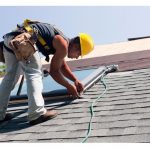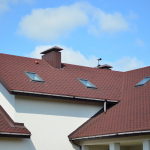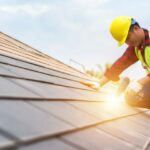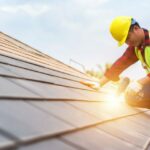
The roof protects the house from all kinds of weather. You and your family are protected against hail, snow, rain, or the heat of the sun because of it. The roof is also the highest point of the house. This means that it needs to keep the water out from rains with strong winds. Every day, the roof is exposed to these elements and they can cause deterioration if there is no proper maintenance.
The three important things that you need to consider on your roof are the roof frames, the structures below, and the cover. The three play a very vital part of defending your house against hurricanes and other elements that might be common in your area. Let us take a further look at these three elements below:
1. Roof Cover: This serves as your house’s umbrella. This is the part that is frequently exposed to sunlight, heat, hail, rain, and wind. Too much exposure to ultraviolet rays or damages from hail can cause the roof material to deteriorate rapidly. If your roof does not have a water-resistant underlayment or a felt paper that serves as an extra surface of protection, it might not last a very long time.
2. Sheaths and Frames: The sheaths are where the underlayment and the covers are attached. The uplift force of the sheaths can equal to the weight of a man and it provides a solid base to the cover. The frames are often made up of joists and rafters that are connected to each other. Example of frames are gabled walls that are strong enough to act as braces for the sheathing.
3. Structures Below You Roof: The structures vary depending on the type of roof that you have. There are timber roof trusses that are connected together to hold down the rafters.
When Is the Right Time for Roof Replacement?
Now that you have an idea on the importance of the roof in your house, you might be wondering what’s the current status that your roofing system is in. You might want to inspect your roof if you recently had hail. Other signs that can tell you that your roof needs attention are:
1. Light From the Attic: Unless you have natural lighting installed in your attic, you might want to look for cracks that cause sunlight to penetrate inside. You might want to arm yourself with a flashlight, check the eaves and look for light beams. Other signs can include streaks and stains that can signify a leaky roof when it rains.
2. Maintenance Was a Long Time Ago: You might want to check when was the last time the shingles were repaired. You might also want to check the previous owners of the date of the roof installation if you bought the house. The typical life span of asphalt shingles is about 25 years. You can check here for more information about roof maintenance and repairs.

3. Broken Shingles: You might want to check your roof for any tell-tale signs of broken shingles. This is important if you experience hailstorms from the previous months. Look for patches, cracks, and buckles. You should also make sure that there are no granules of shingles that can be found on the downspouts or gutters. Roofs that lose a lot of granules may tell you that it is time for a replacement.
4. Flashings: A lot of older homes did flashes around their chimneys, skylights, or vents. The flashing seals the roof’s seams from rain. Read more about flashing here: https://www.merriam-webster.com/dictionary/flashing. Examine the flashpoints if applicable and make sure that they are intact. If you see any breaks or cracks, it could mean that leaks are going to happen when it rains hard. If possible, upgrade the flashing to metal, so that it will be more durable.
If you want to know more about roof maintenance, you can take the DIY route. You can research, buy the necessary things from your local store, and make sure to address any roof leaks before they become worse. On the other hand, roof maintenance can be dangerous if you do not have any experience in it. You can call a professional and get the help from Mighty Dog Roofing.







